SPA
Ecologists Kicked Out at Kate Chaney's Curtin 'Sustainability' Fair
 On Saturday, 2 November, SPA attendees at the "Curtin Sustainability Fair," sponsored by Teal politician Kate Chaney in Perth, faced an unexpected disruption. Their aim was to raise awareness about the ecological impacts of population growth. However, their efforts were met with unexpected resistance.
On Saturday, 2 November, SPA attendees at the "Curtin Sustainability Fair," sponsored by Teal politician Kate Chaney in Perth, faced an unexpected disruption. Their aim was to raise awareness about the ecological impacts of population growth. However, their efforts were met with unexpected resistance.
"Housing disaster will extend for years if population growth ignored" - Sustainable Population Australia
 Without a mature discussion on population growth, the housing crisis will extend for years to come, according to Sustainable Population Australia (SPA). SPA National president Peter Strachan says there is deep denial within the government that population is the main factor driving housing demand.
Without a mature discussion on population growth, the housing crisis will extend for years to come, according to Sustainable Population Australia (SPA). SPA National president Peter Strachan says there is deep denial within the government that population is the main factor driving housing demand.
Thirty years too long to turn a blind eye to world population growth - Dr Jane O'Sullivan - SPA
 September 13 marks thirty years since ideologues took control at the United Nations International Conference on Population and Development (ICPD) in Cairo to stigmatise the idea of stabilising population numbers, falsely claiming it led to human rights abuses.
September 13 marks thirty years since ideologues took control at the United Nations International Conference on Population and Development (ICPD) in Cairo to stigmatise the idea of stabilising population numbers, falsely claiming it led to human rights abuses.
It’s the population growth, stupid! SPA responds to June ABS population data
 Sustainable Population Australia (SPA) congratulates Australians for making a sensible and sustainable choice to have smaller families. Despite the nation’s total population rising by 8.2 million since 2000, The Australian Bureau of Statistics reports that 15,900 fewer babies were born in the year to December 2023 than in the previous year, limiting natural population expansion to 103,900.
Sustainable Population Australia (SPA) congratulates Australians for making a sensible and sustainable choice to have smaller families. Despite the nation’s total population rising by 8.2 million since 2000, The Australian Bureau of Statistics reports that 15,900 fewer babies were born in the year to December 2023 than in the previous year, limiting natural population expansion to 103,900.
Nobody controls immigration to Australia
 Nobody controls immigration into Australia. If Big Australia wants to increase it, they can't. If Small Australia wants to reduce it, they can't. When John Howard said, "But we will control who comes to this country," he was lying then, and it is an even bigger lie now.
Nobody controls immigration into Australia. If Big Australia wants to increase it, they can't. If Small Australia wants to reduce it, they can't. When John Howard said, "But we will control who comes to this country," he was lying then, and it is an even bigger lie now.
Human population a major factor in habitat loss and biodiversity decline
On the eve of the International Day for Biodiversity (IDB), Sustainable Population Australia (SPA) calls on governments, including our own, to acknowledge that human population numbers and growth are primary causes of habitat loss and, in turn, biodiversity decline.
SPA mourns loss of Lowitja O’Donoghue
 Sustainable Population Australia is mourning the loss of its former trustee, Dr Lowitja O’Donoghue, who died in Adelaide yesterday.
Sustainable Population Australia is mourning the loss of its former trustee, Dr Lowitja O’Donoghue, who died in Adelaide yesterday.
Dr O’Donohue was the inaugural chairperson of the Aboriginal and Torres Strait Islander Commission (ATSIC) patron of the Lowitja Institute, a research institute for Aboriginal and Torres Strait Islander health and wellbeing.
SPA: Annual growth of well over half a million undemocratic and unacceptable
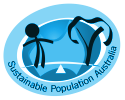 Australia’s annual growth of 2.2 per cent (563,200 people) is undemocratic and unacceptable according to Sustainable Population Australia (SPA).
Australia’s annual growth of 2.2 per cent (563,200 people) is undemocratic and unacceptable according to Sustainable Population Australia (SPA).
Today the ABS released its figures to the year ending 31 March 2023 showing the growth comprised Net Overseas Migration (NOM) of 454,400 and natural increase of 108,800.
SPA: Australia’s population growth rate of nearly half a million ‘too high’
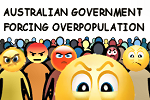 Sustainable Population Australia (SPA) considers Australia’s population growth rate in 2022 too high and called on the federal government to put a brake on immigration. The Australian Bureau of Statistics (ABS) released the latest population figures today showing Australia’s population grew by nearly half a million (496,800 or 1.9%) in the year ending 31 December 2022.
Sustainable Population Australia (SPA) considers Australia’s population growth rate in 2022 too high and called on the federal government to put a brake on immigration. The Australian Bureau of Statistics (ABS) released the latest population figures today showing Australia’s population grew by nearly half a million (496,800 or 1.9%) in the year ending 31 December 2022.
SPA: Australia-India Migration Agreement confirms Albanese’s ‘Excessively Big Australia’
 The Australia-India Migration and Mobility Partnership Agreement reconfirms that Australian Prime Minister Albanese stands for an ‘Excessively Big Australia’, according to Sustainable Population Australia (SPA). Voters are coming off third best.
The Australia-India Migration and Mobility Partnership Agreement reconfirms that Australian Prime Minister Albanese stands for an ‘Excessively Big Australia’, according to Sustainable Population Australia (SPA). Voters are coming off third best.
Mass migration isn’t good for Australia, and it’s never “properly planned and well managed”
Sustainable Population Australia (SPA) has questioned the claim by the Business Council of Australia (BCA) that ‘two thirds of Australians believe that properly planned and well managed migration is good for Australia’. BCA has asked a loaded question, to get the answer they wanted. Their result is directly contradicted by the more reliable Australia Population Research Institute survey. Here, 70% want net migration at somewhat or much lower levels than the pre-COVID 240,000.
Treasury is gaslighting the Australian people on population

 The Australian people, and most journalists, are being gaslighted by the Treasury budget papers’ superficial analysis of Australia’s immigration and population growth. That this is being let go to the keeper by virtually all media commentary is extraordinary, according to Sustainable Population Australia (SPA).
The Australian people, and most journalists, are being gaslighted by the Treasury budget papers’ superficial analysis of Australia’s immigration and population growth. That this is being let go to the keeper by virtually all media commentary is extraordinary, according to Sustainable Population Australia (SPA).
New report confirms population growth causes long-term housing inflation: SPA
 A new report confirms beyond doubt that rapid population growth is the main cause of Australia’s housing affordability crisis, notes Sustainable Population Australia (SPA). While interest rates and government policies influence short-term trends in house prices, it is population growth that has driven house price inflation long-term.
A new report confirms beyond doubt that rapid population growth is the main cause of Australia’s housing affordability crisis, notes Sustainable Population Australia (SPA). While interest rates and government policies influence short-term trends in house prices, it is population growth that has driven house price inflation long-term.
SPA: Keep population below 30 million for environment and wellbeing
Response to new Centre for Population report: Australia must stabilise its population below 30 million to stop the growing impacts on climate and biodiversity, as well as preserve quality of life, according to the environment organisation Sustainable Population Australia (SPA). SPA president, Ms Jenny Goldie, was commenting on the latest report from the ‘Centre for Population’, the Treasury office which advises the federal government on population. Their report is due to be released Friday 6 January.
Do Australians wish to return to high levels of immigration, or not?
A recent opinion poll by The Australian Centre for Population Research (TAPRI) found that 70% of Australians do not wish to return to pre-Covid immigration levels of 240,000 per year or anything like this number.
In contrast, an Essential Research (ER) poll suggested that a declining proportion of respondents were concerned about immigration levels being too high.
Topic:
SPA welcomes near ZPG national figures despite state baby booms
 Sustainable Population Australia (SPA) has welcomed the latest figures from the Australian Bureau of Statistics (ABS) that show population growth has fallen to near zero (0.1 per cent) despite an apparent baby boom. Yesterday, the ABS released figures for the year ending March 31. Australia’s population grew by 35,700 or 0.14 per cent. Annual natural increase was 131,000 and net overseas migration (NOM) was -95,300. This news came not long after NSW Health announced more than 19,000 babies were born in NSW hospitals from April to June this year, a nine per cent increase on the same period last year.
Sustainable Population Australia (SPA) has welcomed the latest figures from the Australian Bureau of Statistics (ABS) that show population growth has fallen to near zero (0.1 per cent) despite an apparent baby boom. Yesterday, the ABS released figures for the year ending March 31. Australia’s population grew by 35,700 or 0.14 per cent. Annual natural increase was 131,000 and net overseas migration (NOM) was -95,300. This news came not long after NSW Health announced more than 19,000 babies were born in NSW hospitals from April to June this year, a nine per cent increase on the same period last year.
Victoria is also experiencing a baby boom with the maternity system stretched to “breaking point”, according to the Victorian health minister, Martin Foley.
“News that our overall population growth has dropped to almost zero is very welcome,” the president of SPA Ms Jenny Goldie says. “In the initial period of border closures, the large number of people leaving the country compared to those entering meant NOM was negative, though not quite enough to offset natural increase of 131,000. In the current year, growth will be higher since most of those that would leave Australia have done so already.
“Now is the perfect time to dispense with the Big Australia goal of perpetual population growth promoted by big business. Instead let’s aim for a stable and sustainable population. These new figures prove that it can be done.
“The annual growth figures from pre-Covid years, which sometimes exceeded 400,000, were simply not sustainable in environmental, social or economic terms.
“Environmentally, population growth causes loss of natural habitat through urban expansion and water diversion, and increases pollution, not least carbon dioxide from burning fossil fuels.
“Socially, infrastructure never kept pace with the needs of a rapidly expanding population, and led to undue crowding in schools, congestion and longer hospital waiting times.
“Economically, workers suffered wage stagnation and capital was diverted from wealth- producing enterprises to speculating on rising land values, creating Australia’s housing unaffordability crisis.
“This is the time when we must review honestly the costs and benefits of the non-humanitarian parts of our migration program. We should never return to the days of immigration-fuelled high population growth,” says Ms Goldie.
Intergenerational report (IGR) 2021: Sustainable Population Australia responds
 Sustainable Population Australia (SPA) believes there is nothing to fear from the downward projection of population size in the Inter-Generational Report (IGR) from 40 million to 38.8 million by 2061. National President Jenny Goldie says what is to be feared are the environmental, social and economic cost of adding another 13 million people to the population.
Sustainable Population Australia (SPA) believes there is nothing to fear from the downward projection of population size in the Inter-Generational Report (IGR) from 40 million to 38.8 million by 2061. National President Jenny Goldie says what is to be feared are the environmental, social and economic cost of adding another 13 million people to the population.
“The IGR fails to take into account the costs of infrastructure which amounts to at least $100,000 in public money for each new person, be they immigrant or born here,” says Ms Goldie.
“The IGR fails to take into account the environmental costs of urban encroachment on natural bushland, threatening iconic species such as the koala, and adding to carbon emissions,” she says. “It fails to address the social costs of crowding, housing unaffordability and longer waiting times that generally accompany population growth.
“Having more people generally means a bigger GDP but not necessarily GDP per capita, which is a better measure of living standards. In fact, GDP is well past its use-by date and, before the end of the IGR time frame, will have ceased to be used. In looking so far into the future, we should be using a range of the newer measures of living standards and well-being.”
Ms Goldie says neither should we fear an ageing population.
“The projection that there will only be 2.7 workers per person aged over 65 in 40 years’ time will probably be wrong,” says Ms Goldie. “In fact, as the working age population shrinks and the labour market tightens, fewer people will be unemployed, and employers will improve wages and conditions to attract job-seekers.
“This will have the effect of drawing more people into the workforce who were not working, or keeping people in work who would otherwise have retired. In other words, the participation rate will improve.”
Ms Goldie says rising health expenditure, while a problem in narrow fiscal terms, is actually a good thing, by keeping people happier and healthier for longer, and by reducing human suffering.
Australian premiere of childfree documentary to be screened late February
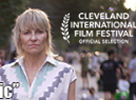 Sustainable Population Australia (SPA) are partnering with filmmaker Maxine Trump on the Australian premiere of her award winning film To Kid or Not to Kid in Melbourne and Perth on the 26 and 27 February. The documentary is being screened as part of SPA’s ‘Stop at Two’ campaign. This will be the first time the film will be screened in theatres before being released on Amazon Prime on February 27th.
Sustainable Population Australia (SPA) are partnering with filmmaker Maxine Trump on the Australian premiere of her award winning film To Kid or Not to Kid in Melbourne and Perth on the 26 and 27 February. The documentary is being screened as part of SPA’s ‘Stop at Two’ campaign. This will be the first time the film will be screened in theatres before being released on Amazon Prime on February 27th.
SPA National President, Sandra Kanck, says the aim of the campaign is to normalise the choice of having small or childfree families.
“The choice whether or not to have children is one of the biggest decisions any individual or couple will make in their lifetime,” says Ms Kanck.
“This decision is often swayed by family and social factors that have traditionally encouraged larger families. It is clear, however, that overpopulation is playing a very significant role in humans’ unsustainable impact on the planet, including climate change and these matters are now bearing on the decisions made by many to have smaller families or no family at all.“As an environmental NGO, we advocate for smaller families as one solution towards reducing pressures on the Earth and support those who go down that path,” says Ms Kanck.
“We applaud director Maxine Trump for turning the camera onto her personal life to bravely dive into the taboo and stigmatised topic of child-free living and to explore the reasons behind this choice,” she says.
“As Director Trump has herself declared ‘’’Why can’t we talk about not having kids?’ We think it’s about time we did.”
Ms Kanck also advised that this month will see the launch of Childfree Magazine, founded by Brisbane based Tanya Williams, author of A Childfree Happily Ever After.
“The launch of this new magazine is another timely contribution towards a less judgemental world where it’s OK not to have children,” says Ms Kanck.
More information
“To Kid or Not to Kid” will be screened in Melbourne on February 26, 08:30 pm at Cinema Nova, bookings here. It will be screened in Perth on February 27, 06:45pm at Bassendean Community Centre in cooperation with Transition Town Guilford, more information here. The Melbourne screening will also include the short film ‘Talking Heads: Choosing to Have Children….or Not’ made in house by SPA.
For more information, please contact Michael Bayliss, SPA communications Manager, at [email protected]
Maxine Trump, Director of To Kid or Not To Kid can be contacted for interview or movie review at [email protected]. or at the website.
Tanya Williams, Chief Change maker at Childfree Magazine>/em>, can be contacted at the website.
SPA Patron Bob Carr interviewed by Michael Bayliss on population impact
'It's not about the source, it's about the numbers, stupid'
Professor Carr was the longest serving Premiere of NSW from 1995 to 2005. He also served as Federal minister for Foreign Affairs from 2012 - 2013.
Bob Carr has been a long time advocate for a sustainable population. In 2000, as Premier of NSW, he stated that Sydney was full, bringing the issue of population into the headlines at a time when domestic population policy was rarely discussed.
While serving as foreign minister, Carr also advocated for a global population policy, including foreign aid for family planning and empowerment of women. During this time, he was approached by SPA to be Patron, a post to which he accepted.
Since leaving politics, The Honourable Bob Carr is Industry Professor (Business and Climate Change) at the University of Technology Sydney (UTS).
In this video, Bob discusses his role in advocating for a sustainable population when in politics, public opinion on the issue, and why organizations such as SPA are crucial to advocate for this critical issue.
Video interview of Sandra Kanck, National SPA President
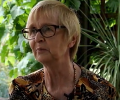 "Media resistance has always been one of the big problems," says Sandra Kanck, who came from a family where there were seven children and she learned early that one wage did not go as far for seven as it might for fewer. From 1994-2009 Sandra served as an Australian Democrats’ Member of the upper house of the South Australian Parliament. Her ‘maiden’ speech in parliament was – predictably for those who know her – about population. For more than nine years Sandra Kanck has been either President or Vice-President of SPA, mostly the former, including reluctantly juggling the role of Acting Treasurer for three months during one of her stints as President.
"Media resistance has always been one of the big problems," says Sandra Kanck, who came from a family where there were seven children and she learned early that one wage did not go as far for seven as it might for fewer. From 1994-2009 Sandra served as an Australian Democrats’ Member of the upper house of the South Australian Parliament. Her ‘maiden’ speech in parliament was – predictably for those who know her – about population. For more than nine years Sandra Kanck has been either President or Vice-President of SPA, mostly the former, including reluctantly juggling the role of Acting Treasurer for three months during one of her stints as President.
SPA Public seminar: "What does the Australian public really think about a Big Australia and what do the media try to make them think?"
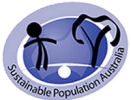
 This seminar will be at the Sustainable Population Australia (Victorian and Tasmanian branch) Annual General Meeting, Saturday September 29th 2018 at 2.30 pm, in the Hawthorn Library meeting rooms 3-4, 584 Glenferrie Rd, Hawthorn VIC 3122. Followed by afternoon tea.
This seminar will be at the Sustainable Population Australia (Victorian and Tasmanian branch) Annual General Meeting, Saturday September 29th 2018 at 2.30 pm, in the Hawthorn Library meeting rooms 3-4, 584 Glenferrie Rd, Hawthorn VIC 3122. Followed by afternoon tea.
Nominations for Committee Positions:

Financial members of SPA may nominate for any committee position, President, Vice President, Treasurer, Secretary or committee member
Please email before 28th September to [email protected]
or write to: Returning Officer, Sustainable Population Australia, Victorian and Tasmanian branch, P.O.BOX 556 Hawthorn 3122 to arrive before Friday September 28th
Following the formal proceedings, you are invited to our public seminar
Public Seminar: “What does the Australian public really think about a Big Australia and what do the media try to make them think?”
Presenters:
Dr. Katharine Betts, Adjunct Associate Professor of Sociology, Swinburne University, Author of “The Great Divide: immigration politics in Australia” and researcher for The Australian Population Research Institute. Dr. Betts will present her research into attitudes of the Australian public towards Australia’s current high immigration- driven population growth.
Ian Penrose, Melbourne’s first Yarra Riverkeeper, City of Melbourne 2010 Environmental Award winner, Boroondara citizen of of the year 2015, long term campaigner for population stabilization. Mr.Penrose will present his recent research into the way the media in Australia frames the population issue.
Free parking is available near the venue.
Please join us for afternoon tea following the seminar!
Melbourne bursts its seams as Australia's population hits 25m - aerial photos
 The Victorian branch of Sustainable Population Australia (SPA) expresses deep concern that Australia will reach 25 million people this week. In anticipation of this milestone, SPA literally took to the sky on the issue by flying a small plane over Melbourne to see first hand whether bigger means better.
The Victorian branch of Sustainable Population Australia (SPA) expresses deep concern that Australia will reach 25 million people this week. In anticipation of this milestone, SPA literally took to the sky on the issue by flying a small plane over Melbourne to see first hand whether bigger means better.

In an ex-military Cessna Birddog ideal for photography, SPA member Dr. Graeme Dennerstein and professional photographer Tanya Fry flew over Melbourne during a morning week-day rush hour to investigate the magnitude of traffic congestion, urban sprawl and high-rise development which are progressively impacting the people of Melbourne as the city reaches a population of 5 million this year.
Photographer Tanya Fry said of her experience:
“We flew over Melbourne city all the way to Kerang. Camera in hand I thought I knew what I was about to see. The sights I saw from the tiny plane both shocked and saddened me. I expected a long urban sprawl and traffic jams of course but nothing like the scale I saw. The urban sprawl went on and on as far as the eye could see. Every freeway was at a standstill.”
“ When we finally did reach the outer parts it was the treeless paddocks all the way to Kerang that was so surprising. Where have all the trees gone? What is wrong with us humans.”
“From up in the air high above you see what we are doing to this great land of ours. If only there was more respect and more consciousness about how much we are thoughtlessly destroying.”
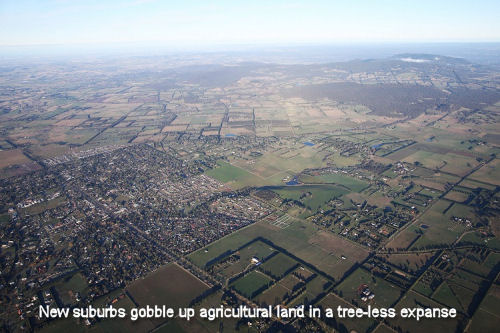
SPA Victorian/Tasmanian Branch president, Michael Bayliss, said: “It is impossible to imagine what Melbourne will look like from the air if the forecasts are true, if the city’s population reaches 8 million in 35 years time by 2050.”
“Our country, our capital cities and our regional centres are growing much faster than expected and this can’t go on indefinitely. Already our infrastructure is struggling to keep pace as we continue to build new suburbs over our precious food bowl, green space and wildlife habitats. We are leaving a poor legacy for future generations. Australia does not yet have a population policy and this has now become a primary concern for most Australians. It is time that our political leaders take notice and take action.”

Sustainable Population Australia (SPA) describes itself as an Australian, member-driven environmental charity which works on many fronts to encourage informed public debate about how Australia and the world can achieve an ecologically, socially and economically sustainable population. It expects to launch several new projects this year in order to encourage more public discussion around the impacts of population growth. It will be releasing a web series ‘Tough Crowd’ where Rod Quantock will interview other comedians and entertainers on the challenges of discussing population in wider society. It has also released a ‘PopCulture’ webpage and a series of videos to highlight the impacts of population growth on job security, traffic congestion and housing affordability.
Vocal Animal interviews Michael Bayliss on Australia's overpopulation problem
 Michael Bayliss, spokesperson for Sustainable Population Australia, speaks up for wildlife and for a sustainable population policy in Australia on Vocal Animal. Note that Michael also advocates a vegan diet for humans, but we do not, even though we publish pro-vegan articles from time to time. A major reason we do not advocate such a diet is that it does not satisfy requirements for animal-sourced vitamins, and can be fatal and disabling. See Incurable Alzheimers or curable B12 deficiency? An epidemic of wilful medical ignorance. (Sorry, Michael, but thanks for a really great interview on population, sticking up for animals. Also, feel free to comment and argue this point.)
Michael Bayliss, spokesperson for Sustainable Population Australia, speaks up for wildlife and for a sustainable population policy in Australia on Vocal Animal. Note that Michael also advocates a vegan diet for humans, but we do not, even though we publish pro-vegan articles from time to time. A major reason we do not advocate such a diet is that it does not satisfy requirements for animal-sourced vitamins, and can be fatal and disabling. See Incurable Alzheimers or curable B12 deficiency? An epidemic of wilful medical ignorance. (Sorry, Michael, but thanks for a really great interview on population, sticking up for animals. Also, feel free to comment and argue this point.)
Michael Bayliss – Sustainable Population Australia Victorian / Tasmanian branch President
Population Matters. So let’s talk about it.
Australia’s population increases by one person every 1 minute and 22 seconds, needing the equivalent of a new city the size of Canberra each year.
Michael discusses why there is a shift in people’s willingness to discuss population, the drivers of Australia’s population growth and outlines SPA’s population policy.
Something to look forward to ….. Sustainable Population Australia is currently producing a web series called ‘Tough Crowd’ hosted by comedian Rod Quantock interviewing comedians about their thoughts on population. Fully-funded but you can find out more here https://pozible.com/project/tough-crowd
Sustainable Population Australia https://population.org.au/
Sustainable Population Australia Facebook https://www.facebook.com/population.org/
Crowdfund film on Oz population taboo - Rod Quantok & Michael Bayliss
Hi, we are Michael Bayliss and Rod Quantock from Sustainable Population Australia & our mission is to create a web series called 'Tough Crowd'. This ‘first of its kind’ project will be made for Australians from all walks of life, especially those who are keen in participating in an open dialogue around one of the most interesting, complex and often controversial of issues: POPULATION.
Rod Quantock is a comedian of 50 years standing as well as a tireless front line environmental warrior. Off the heels of the East West Link, campaign he has just finished his sold out stand up comedy show 'Happy Birthday To Me' for the Melbourne Comedy Festival. His many contributions to society have earned him a Medal of the Order of Australia.
Michael Bayliss is an environmental and social justice campaigner with a background in post growth economics and sustainable town planning. He is also Communications Manager for Sustainable Population Australia (SPA), a member driven environmental organization which works on many fronts to encourage informed public debate about how Australia and the world can achieve an ecologically, socially and economically sustainable population.
Population is an issue that affects each and every one of us, but it can be a thorny subject to talk about over the dinner table! Many people have different opinions on the issue. For example, should we be having small or large families? How many people can Australia and our capital cities support? Could we solve the problem by moving to the country or building more high rises in our cities? Should we have open borders or should we review our migration policies?
'Tough Crowd' wants to explore all these tough questions and more. Rod Quantock will host a series of four 10 minutes episodes as he interviews a range of Australian comedians and entertainers to discuss their own experiences and challenges around discussing the issue among their friends, family and the wider community.
'Tough Crowd' will also interview key members of the public who will offer unique viewpoints to this conversation. Examples include people who have chosen not to have children and the reasons why they came to their decisions. This may also include overseas born people on their ideas on what Australia's migration policy should look like. If the project expands, we would also be keen to interview politicians, refugees, and indigenous activists who have strong views on the issue. Further possibilities could include open discussions between child free people and those with large families and the reasons why they reached their decisions.
'Tough Crowd' will have a public screening in Melbourne followed by a publically available web series. It is our mission that it is possible to have a conversation around population that is entertaining, laid back, insightful - and even funny!
'Tough Crowd' is seeking funding to supplement the cost of video, sound and editing equipment, for the production of the video shoot, to financially compensate people being interviewed, venue hire for the series including the public screening and for advertising costs to promote the series.
We think this is a new and exciting project with much potential and possibility. We hope you think so too! We can't make this happen without the help the help of our supporters and kindly strangers alike, so we’d love to have you on board.
Budget Overview
The budget will include -
Reimbursments for contributions to video projects (e.g. for public figures): $1500
Venue hire for filming and public screening: $500
Promotion: $2000
Additional backup funds: $150
Additionally we need to purchase the following -
Video Camera: $3000
Shotgun Microphone: $400
Wireless microphone kit: $1000
Spare battery and Camera Bag: $100
Tripid: $150
Video editing software: $200
We may be able to cover half of these costs, however we need to raise a minimum of $4500 for this project to be viable.
Potential Challenges
1. To keep costs to a minimum, we will be aiming to film the series over 1 - 2 days intensive days with a small production team. To get around this challenge, we will do as much prior preparation as possible. We have existing experience in film production and have professional contacts in the film industry that we can call on to assist us in our processes.
2. There may be logistic challenges in finding the right dates and times that will suit all potential interviewees for the series. It is important to find a range of people interested in being part of the project so that there are options if some interviewees have difficulties around taking part.
3. Due to a small team, there will be a high workload around the filming production, editing, promotion and public screening of the series. As such, we will stagger this process in several stages, with the final release of the web series launched towards the end of 2018.
4. Tough Crowd is a new type of project. Although the 'conversations in the pub' style of web video has been done on a range of issues, this approach has not be done around population in Australia (as far as we are aware). We have observed that population is a unique issue that has many different points of view. Current mainstream opinions can be difficult to predict. As such, it is difficult to predict the magnitude of success that this sort of project will have. All efforts will be taken to promote the web series to the wider community and to use marketing advice to target specific audience groups. However, due to the nature of the issue itself, it is invevitably difficult to predict the exact degree of crossover mainstream success that this project may have.
Sustainable Population Australia (SPA) swings into the ABC population debate
 Have you noticed the sudden unexpected coverage about population on the ABC? On the 12th of March, 4 Corners ran an episode called ‘Big Australia - Are We Ready.’, Directly following this was a panel discussion QandA on ‘A Big Australia’. Since then, population has continued to be one of ‘the’ major topics of discussion in the mainstream media, including ABC radio and the mainstream press such as Fairfax and News Ltd.
Have you noticed the sudden unexpected coverage about population on the ABC? On the 12th of March, 4 Corners ran an episode called ‘Big Australia - Are We Ready.’, Directly following this was a panel discussion QandA on ‘A Big Australia’. Since then, population has continued to be one of ‘the’ major topics of discussion in the mainstream media, including ABC radio and the mainstream press such as Fairfax and News Ltd.
It is evident that much of the main focus from the media has been to manage the symptoms of a rapidly growing population rather than the cause. However, this has also been a time of great opportunity for SPA as we been very busy over the last couple of weeks getting ourselves out there and taking part in the greater discussion.
Now is a time to reflect and celebrate some of our successes.
Firstly, the panel on QandA included two SPA patrons, Bob Carr and Tim Flannery. Both provided strong arguments on the need for a population policy. Both provided great foil up against speakers from the Property Council and the Grattan Institute. Bob Carr in particular was a very strong voice for our cause and Tim Flannerry provided an environmental rationale.
Secondly, SPA was contacted by the ABC in the lead up to the QandA broadcast. The ABC specifically invited SPA members to join the Q&A studio audience. SPA facilitated a call-out to members via social media, a national membership email-out, and through the state branches. This resulted in a success for SPA in that one supporter, Matthew Bryan, ended up providing the first question to the QandA panel. The question was both articulate and emotive - well done Matt! SPA members also submitted many video questions to the QandA panel, which did not make the final broadcast. Presenter Tony Jones said on air that the population issue was receiving unprecedented interest from the public and warranted further attention. Candobetter published a critique of the program which provides a transcript of Matthew’s question and the panel responses.
Image: John Standish
SPA’s Communications Manager Michael Bayliss was then contacted by ABC Melbourne to take part in Jon Faine Conversation Hour the following Friday. The episode discussed ‘A big Melbourne’ as it reaches 8 million and on the issue as to whether we need a population policy. Michael strongly advocated for SPA’s position under some very tough questions from Faine and it encouraging that so many people who called or texted in were on side, including several members of SPA’s Victoria and Tasmania branch.
Finally, Michael has recently had an article published in Independent Australia. The article has been an effective way for SPA to articulate our position in the press on population policy, both nationally and globally. So far the article has received much positive attention, including international exposure via Population Matters. This has been important considering that there has been a lot attention on population from the mainstream press in recent weeks. Some of it has been positive but much more has been against our position. SPA member Mark Allen wrote a response article to journalist Joe Hildebrand for CandoBetter, who has recently posted some incorrect assertions on people who advocate for population sustainability in Australia.
SPA is proud of our achievements over the past month in this very important national debate, and we are cautiously optimistic that these recent events could be a turning point for a better national dialogue on population policy.
Sustainable Population Australia comments on Tony Abbott and Peter Dutton on migration
 Australia has no coherent population plan other than to inundate the major cities with people. Instead of a well though-out population policy, the strategy has been to stoke overall economic growth to support big business. This suits the property industry and retailers but GDP per capita growth is stagnating while ordinary Australians are worse off.
Australia has no coherent population plan other than to inundate the major cities with people. Instead of a well though-out population policy, the strategy has been to stoke overall economic growth to support big business. This suits the property industry and retailers but GDP per capita growth is stagnating while ordinary Australians are worse off.

Peter Dutton and Tony Abbott have both recently called out for a reduction of immigration to Australia. To quote Mr Abbott: "At the moment we’ve got stagnant wages, unaffordable housing, clogged infrastructure and there is no doubt the rate of immigration impacts on all of these things.”
We support Mr Abbott's comments but it's unfortunate he didn't consider this while he was Prime Minister. Australia is suffering cumulative economic and environmental damage from unconstrained growth.
It is incorrect of Peter Dutton to suggest that “in the Labor years the number peaked at about 305,900 in one year which was an enormous number, we’ve got that number down now below 190,000 ”
While it is true that net overseas migration (NOM) – which includes both permanent and temporary long-term residents – peaked under Labor (at 315,700), it was still running at 245,500 as at the year to June 2017.
Most importantly, Peter Dutton failed to mention that Australia’s permanent migrant intake has never been higher than under this Coalition Government, set at nearly 210,000 a year currently.
Currently 60% of Australia’s growth is skilled migration whereas the humanitarian intake is less than 10%.
Foreign aid has also been significantly cut whilst the coalition has been in power. This is particularly true for overseas family planning services and the access to education that is required to empower women to choose the size of their families.
Paul Hawken, who was the keynote speaker at Melbourne’s Sustainable Living Festival, stated that family planning and access to education are together the most significant global responses to addressing climate change.
SPA calls for a fundamental change to population policy that addresses population issues both nationally and globally. This should involve reducing total migration to around 70 000 per annum (without any cuts to our refugee program) while also implementing a generous proactive humanitarian aid program that will address global overpopulation and displacement issues without coercion.
This will help to lead us towards stabilising populations both at home and abroad in the most sustainable and equitable way possible.
Sustainable Population Australia (SPA) is an Australian, member-driven environmental charity which works on many fronts to encourage informed public debate about how Australia and the world can achieve an ecologically, socially and economically sustainable population.
SPA Submission to the Inquiry into the Australian Government’s role in the development of cities.
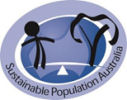 "As Sustainable Population Australia is an environmentally focused organization, we advocate policies that encourage human activity that is sustainable within finite natural limits and question the ongoing growth paradigm. Growth in the capital cities is reaching limits, whilst coastline development impacts fragile ecosystems. However, inland Australia is more subject to temperature extremes, water shortages and a lack of locational comparative advantage to sustain livelihoods. Within the context of an increasing climate emergency and peak fossil fuel energy, investment will be better spent on resilient communities and foreign aid rather than growth for growth's sake."
"As Sustainable Population Australia is an environmentally focused organization, we advocate policies that encourage human activity that is sustainable within finite natural limits and question the ongoing growth paradigm. Growth in the capital cities is reaching limits, whilst coastline development impacts fragile ecosystems. However, inland Australia is more subject to temperature extremes, water shortages and a lack of locational comparative advantage to sustain livelihoods. Within the context of an increasing climate emergency and peak fossil fuel energy, investment will be better spent on resilient communities and foreign aid rather than growth for growth's sake."
House of Representatives Standing Committee on Infrastructure, Transport and Cities
[email protected]
SPAVicTas Submission to the Inquiry into the Australian Government’s role in the development of cities.
http://www.aph.gov.au/Parliamentary_Business/Committees/House/ITC/DevelopmentofCities/
Introduction:
Sustainable Population Australia (SPA) is an Australian, member-driven environmental charity which advocates to establish an ecologically sustainable human population. It works on many fronts to encourage informed public debate about how Australia and the world can achieve an ecologically, socially and economically sustainable population.
SPA advocates for a generous humanitarian program for refugees whilst addressing the causes of displacement abroad. SPA questions policies that encourage high population growth rates, particularly when motivated by narrow economic goals (e.g. we advocate for lower non-humanitarian immigration). We work with international colleagues to promote rights-based voluntary family planning programs in high fertility countries, and to elevate the rights of women and girls everywhere.
Our main response to the inquiry is for an amendment to Australia’s population policy. Currently, Australia has one of the highest population growth rate in the OECD. According to Australian demographic statistics, Australia grew by 1.6% pa. to the end of 2016, or by 373 000 people:
(1). This is high by world standards. Some states are growing disproportionately faster, e.g. Victoria grows at 2.4%. Most of this growth occurs in the capital cities which absorb around 80% of total growth. Melbourne expands by 92 000 thousand per annum and is Australia’s fastest growing city
(2). This rapid population growth contributes significantly to the difficulty in town planning systems to maintain or improve the functionality of our capital cities.
However, this population growth is not inevitable. Australia could maintain a broadly stable population and maintain humanitarian obligations without any changes to the current birth rate or the humanitarian program. Non-humanitarian (including skilled) migration is the largest driving force behind Australia’s growing population, which is motivated by economic ideology. SPA argues that it is difficult to meet town planning objectives with this rate of population growth, and that an amendment to population policies, in accordance with former MP Kelvin Thomson’s’ 14 point plan would assist in many of the town planning issues impacting our major cities (3).
As Sustainable Population Australia is an environmentally focused organization, we advocate policies that encourage human activity that is sustainable within finite natural limits and question the ongoing growth paradigm. Growth in the capital cities is reaching limits, whilst coastline development impacts fragile ecosystems. However, inland Australia is more subject to temperature extremes, water shortages and a lack of locational comparative advantage to sustain livelihoods. Within the context of an increasing climate emergency and peak fossil fuel energy, investment will be better spent on resilient communities and foreign aid rather than growth for growth's sake.
The submission shall now address the below criteria directly:
<2>1) Sustainability transitions in existing cities2>
• Identifying how the trajectories of existing cities can be directed towards a more sustainable urban form that enhances urban liveability and quality of life and reduces energy, water, and resource consumption;
By virtue of our increasing infrastructure deficit and indicators that our capital cities are struggling to keep up with growth (4), we are becoming increasingly limited in our ability to reduce our per-capita footprint. This is because suburban sprawl requires longer commutes, increased biodiversity loss, loss of agricultural land and all round higher carbon living. Higher density increases the urban heat island effect, and is requiring increasingly costly and high-environmental-impact infrastructure, particularly for transport tunnels. This is where the dichotomy of population versus consumption starts to break down when discussing sustainability. The two are interconnected.
Melbourne and Sydney are both expected to double their population to over 8 million by 2050 by current trajectories. Therefore the impact of energy, water and resource consumption will also double unless drastic measures are implemented quickly to mitigate per capita consumption of these resources. Without amending our current population policy, this means reducing our per capita consumption of energy, water and resources by 50% in 35 years to maintain current levels of total consumption. Furthermore, there is no plan to stop at 8 million – following this path would lock in further subsequent growth. There is a limit to how far per person demand for water and energy can be diminished. Therefore, vast changes to the way we live, requiring sacrifices of amenity, will have little benefit for sustainability in the long run if population growth remains high.
The State of the Environment report in Victoria 2008 (5) refers to population growth and settlement patterns as contributors to degenerating environmental factors in the state. Academic Rachel Carey in Footprint from Melbourne (6) warns of the impacts of urban sprawl on Melbourne’s food bowl. Continued urban sprawl will reduce the city’s food bowl capacity significantly, from 40% currently to around 18% by 2050. The suburban sprawl model is increasingly viewed as an unsustainable way of living. In the documentary ‘The End Of Suburbia’, James Howard Kunstler refers to suburbia as the ‘greatest misallocation of resources in the history of the world’ whereas Richard Heinberg states that ‘suburbs wouldn’t exist if it weren’t for cheap oil’.
The current town planning response to suburban sprawl is to (a) develop on brownfield sites and (b) increase density in the inner and middle suburbs. There is however a limit to which brownfield sites can address rapid population growth. To provide an example in Melbourne, the Fishermans Bend urban renewal project in Melbourne will take decades from inception to completion, yet it will only absorb 10 months worth of Melbourne’s population growth. Meanwhile, town planning academics such as Bob Birrell and Michael Buxton criticise the current high rise paradigm. Reasons include that most new apartments are being built to accommodate specific demographic groups (e.g. too small to house families) and that they are geared towards investors. A downside of this is that new apartments are rarely built to last. Melbourne City Council planner Leanne Hodyl released a 2015 report that said high-rise developments were being built at a rate four times higher than that of some of the world’s highest density cities, and the current Victoria state Planning Minister has admitted that many Melbourne apartments are too small, too dark and badly ventilated. The business model driving their construction is clearly not one intended to enhance urban liveability and quality of life. It is one which aims to force residents to accept the style of housing most profitable to developers.
Regardless of the method in which we continue to grow cities, the costs on infrastructure must be considered. A higher population growth rate means a greater proportion of total economic activity has to be dedicated to expanding infrastructure. The public cost (across all levels of government) per extra person for Gross Fixed Capital Formation (largely infrastructure) is at least $100 000 with some estimates much higher. Dr Jane O’Sullivan has explored the correlation of infrastructure costs and population growth in depth:
“These analyses show that acquiring the durable assets to support population growth has historically cost around 6.5-7% of GDP per one percent population growth rate. Thus, if Australia’s growth is 1.5% p.a., around 11-12% of GDP is diverted to the task of acquiring infrastructure and other durable assets, merely to extend to the additional people the level of service already available to the existing population.” (6)
This long-term average cost has been compounded in the last decade by the much higher cost of retrofitting already built-up areas, and the dis-economies of scale of high rise construction. For example, the East west link tunnel was costed at $1 billion per kilometre, around twenty times higher than above-ground roads and rail.
In its 2013 report “An Ageing Australia: preparing for the future”, the Productivity Commission warned that, due to elevated population growth, total private and public investment requirements over the next 50 years are estimated to be more than 5 times the cumulative investment made over the last half century. They noted that failure to finance this infrastructure would reduce total factor productivity.
Infrastructure has a considerable financial cost but also an environmental impact as all infrastructure requires the use of scarce resources and energy to make and operate. We are not making our cities more environmentally resilient by concreting over them.
• Considering what regulation and barriers exist that the Commonwealth could influence, and opportunities to cut red tape; and
We advise that many of the issues listed above could be mitigated if the Commonwealth government modified its policy on economically driven population growth so that population growth occurs at a slower rate, and tapers off at an anticipatable level. This will make town planning outcomes such as urban form and environmental objectives much easier to manage. National tax reforms such as negative gearing and capital gains concessions, selling the right to develop rezoned land (to capture the windfall gain in property values from rezoning) and reforms to political donations, may assist in mitigating the lobbying power of property developers and private interests over state and local council town planning decisions.
We reject the claim that housing and infrastructure stress is merely a supply problem and attributable to “regulation, barriers and red tape”. It is mostly a demand “problem”, where demand has been deliberately elevated to the advantage of developers, against the interests of existing residents.
• Examining the national benefits of being a global 'best practice' leader in sustainable urban development.
This would enable our conurbations to be in the best position to adapt to a low carbon economy with the knock-on effect of having far reaching economic benefits. However, if population growth continues at the current rate, we will lose the small window of opportunity we currently have to adapt our conurbations to a low carbon way of living. We must preserve the food bowls around our cities and it is imperative that infrastructure and affordable housing is in sync with population growth. (The lack of public transport infrastructure delivery on the urban fringes for example is very disheartening.) Otherwise we will continue to see an acceleration of car dependent sprawl on the urban fringe as well as a poor standard of urban intensification in the inner and middle suburbs (which instead of helping to reduce sprawl is contributing to it due to the spatial inequality that is apparent when there is a severe lack of social housing in new developments). This will also have huge implications for incoming migrants who will be forced further into non-walkable communities on the urban fringe.
Population growth rate itself diminishes prospects for good urban design. It is impossible to design for perpetual growth. All designs have a carrying capacity, beyond which they become congested and inefficient. If our population growth were slowing toward a predictable stable population level, urban design could optimise the functionality and amenity for that population. A perpetually growing population makes all designs ephemeral fixes. Our major infrastructure must spend half its life inefficiently under-utilised and the other half inefficiently congested. Australians who visit Japan or continental Europe often remark on the quality and efficiency of infrastructure. This has been achieved because their populations have been near stable.
Some growth advocates such as Bernard Salt and Lucy Turnbull advocate modular cities, composed of multiple adjoining “20-minute communities” around their own business centre. This is a fantasy which no real city has achieved. Attempts generally resort to secondary centres remaining dormitories with long commutes. The same can largely be said of regionalisation. The only centres to achieve growth at or above the rate of growth of the capital city are those which have become, through improvement in transport and diminishing expectations of commuters, viable for commuting to the capital.
2) Growing new and transitioning existing sustainable regional cities and towns
• Promoting the development of regional centres, including promoting master planning of regional communities;
• Promoting private investment in regional centres and regional infrastructure;
• Promoting the competitive advantages of regional location for businesses;
• Examining ways urbanisation can be re-directed to achieve more balanced regional development; and
• Identifying the infrastructure requirements for reliable and affordable transport, clean energy, water and waste in a new settlement of reasonable size, located away from existing infrastructure.
According to the Productivity Commission (7), regional Australia is generally not attractive for skilled migrants to settle long term. However, there is sufficient intrastate movement from capital cities to regional Australia (particularly from younger urban families) to assist prosperity in regional areas, if there is indeed demand for growth in those areas. For example, According to recent market research, approximately 450,000 people are planning to move to regional Victoria from Melbourne in the next three years. Increasing Australia’ population through the skilled migration program is not therefore an effective method in increasing population in the regions if current settlement patterns persist.
In the past five years (up until August 2016) Victoria's population has grown by five hundred thousand. Twenty six thousand of this was in Victoria's three main regional cities (8). That translates to just fifteen weeks of Victoria's overall population growth in the years since 2011. The potential for increasing the population of even smaller towns (especially those that are not in commutable distance from Melbourne) is considerably less and in the long term you would only be looking at perhaps a few thousand here and there (which is negligible in face of our current rate of population growth).
Previous attempts to decentralise people and jobs from the cities to the regions in Australia have largely been unsuccessful, though politicians still like to cite this as something that we should do. Most of the growth in regional areas currently occur in the peri-urban areas of capital cities (e.g. Newcastle and Wollongong in NSW, Sunshine Coast in Queensland, Geelong, Bendigo and Ballarat in Victoria). Many of these town are becoming effectively dormitory suburbs for the capital cities, and people are still dependent on capital cities for work and services. There is a limit however to how large these urban centres can grow before they start to have infrastructure and urban sprawl problems of their own. For example, if most of Victoria's population increase of 100,000 a year were to be directed away from Melbourne, the question remains how large regional Victoria could grow before we need to return to growing Melbourne? (Large regional cities in Victoria such as Geelong are already starting to be impacted with urban sprawl issues of their own.) Within a couple of decades we would be back to where we are now.
In terms of establishing new, self-sufficient urban centres, it is very hard to create a critical mass of economic activity, if there isn't a natural "attractant", and if there is one, you don't need to intervene - a centre will create itself. The problem is not caused by a shortage of people in that location and can't be solved by adding more. It can be argued that we don't have a shortage of people willing to live in rural areas, we have an erosion of livelihoods that rural areas can support (and this has a lot to do with the increasing share of the value of rural products that is captured up-stream in the supply chain). We don't have a skills shortage, we have a situation where employers are not willing to train and pay people enough to do the job. We don't have a shortage of working-age people to build the workforce, we have a shortage of spending, due to too much of people's income being siphoned off to "capital" (housing costs, and profits or interest payments going to overseas investors, or going to Australian investors who reinvest it in ventures that don't employ Australians, like paying ever more for the same piece of land, or gaming the stock market). It is spending that creates demand for workers, and it is lack of demand, not lack of supply, that limits the workforce.
There have been proposals for new cities, including the CLARA smart city scheme, which would include about 8 new cities along the main transport routes between Melbourne and Sydney, housing around 250,000 people each. However, the investment cost seems formidable, which would require around $200b worth of infrastructure over the next 40 years. Even then, this would still only accommodate six years’ worth of population growth.
We note that these new cities would be within the catchment of the Murray River, whose water is already over-allocated. Water could only be provided by withdrawing it from irrigated agriculture, stripping livelihoods from the rural communities throughout the system. Far from revitalising regions, they would directly undermine small communities. The livelihoods within these cities could only be generated by ongoing government intervention, to locate activities there despite lack of natural advantage. Such subsidies can only withdraw more resource away from addressing the intensifying social issues of our capital cities.
Most Australians also prefer the relatively less extreme temperature variations of living near the coast, which is one reason why we are ultimately a nation of urban-conurbations rather than boundless plains. It is hard to conceive that much of inland Australia, with higher temperature extremes, a drier climate and less access to water would be attractive places to settle for many people. To force people to accept these options, in order to mitigate a purely self-inflicted problem of major city congestion, is in no way improving liveability.
For the above reasons, Sustainable Population Australia does not see regional development as a viable solution to solving population growth issues in our capital cities without amendments to national population growth policies.
The concept of regionalisation is used to give the impression that we can enjoy the supposed benefits of population growth while directing the disbenefits elsewhere. Neither the claimed benefits, nor the proposed regionalisation, have foundations in reality. In contrast, reducing Australia’s population growth is very easily achieved, by the Federal government reducing non-humanitarian immigration quotas, just as it was doubled 13 years ago by increasing them. Instead of discussing the multifaceted benefits of reducing population growth, false “solutions” are offered. These range from regionalisation to densifying middle suburbs, massive government spending (and debt) for infrastructure such as schools, public transport and public housing, building smaller homes, and putting tolls on a range of trunk roads in peak periods (9). These options might mitigate some of the loss of liveability that unmanaged population growth would impose, but deliver no improvement on previous conditions. They provide residents with “less for more”, with severely constrained lifestyles and higher costs of living, rather than “enhancing urban liveability and quality of life”.
In conclusion, there are no solutions to the stresses of population growth, without reducing the population growth itself. Individual projects may provide improvement in the short term, but will soon be overtaken by further growth. While good planning can reduce the erosion of living standards, only ending population growth will allow environmental outcomes and liveability to be improved in a sustained manner.
Sources:
1. Australian Bureau of Statistics: Population http://www.abs.gov.au/AUSSTATS/[email protected]/mf/3101.0
2. The Conversation - Three charts on Australia’s population shift and the big city squeeze https://theconversation.com/three-charts-on-australias-population-shift-and-the-big-city-squeeze-75544
3. Kelvin Thomson’s 14 Point Plan For Population Reform http://dicksmithpopulation.com/wp-content/uploads/2010/05/Kelvin-Thomson-MPs-14-Point-Plan-November-2009.pdf
4. The Age. Melbourne now as clogged as Sydney, and the city's north-east has worst traffic http://www.theage.com.au/victoria/melbourne-now-as-clogged-as-sydney-and-the-citys-northeast-has-worst-traffic-20170702-gx2zup.html
5. Comissioner for Environmental Sustainably Victoria: State Of The Environment Report 2008. http://www.ces.vic.gov.au/publications/state-environment-report-2008
6. O’Sullivan, J.N. 2012. The burden of durable asset acquisition in growing populations. Economic Affairs 32(1), 31-37. http://onlinelibrary.wiley.com/doi/10.1111/j.1468-0270.2011.02125.x/pdf ; O’Sullivan J.N. 2014. Submission to the Productivity Commission Inquiry into Infrastructure provision and funding in Australia. http://www.pc.gov.au/__data/assets/pdf_file/0004/135517/subdr156-infrastructure.pdf
7. Productivity Commission 2016 – Inquiry Report: Migrant Intake into Australia http://www.pc.gov.au/inquiries/completed/migrant-intake/report/migrant-intake-report.pdf
8. Networked Rural Councils Program: Rural Migration Trends and Drivers 2012. http://www.ruralcouncilsvictoria.org.au/wp-content/uploads/FINAL-Rural-Migration-Trends-and-Drivers_NRCP-5-2_14-December-2012.pdf
9. Millar R. and Cuthbertson M. 2017-Crammed: Ten ideas for dealing with Melbourne’s population growth. The Age, 8 July 2017. http://www.theage.com.au/victoria/crammed-ideas-for-dealing-with-melbournes-booming-population-growth-20170707-gx6rw1.html
Michael Bayliss,
SPA Branch President, Victoria and Tasmania
On behalf of Sustainable Population Australia
The growth economy- is there another way? Philip Sutton speaks at SPAVicTas AGM September 10th
 Co-author of Climate Code Red and the author of the 2015 Breakthrough paper Striking Targets, seasoned Melbourne based environmental campaigner, Philip Sutton, is known for his comprehensive and well-researched presentations.
Co-author of Climate Code Red and the author of the 2015 Breakthrough paper Striking Targets, seasoned Melbourne based environmental campaigner, Philip Sutton, is known for his comprehensive and well-researched presentations.
Sustainable Population Australia (Victorian and Tasmanian branch)
Annual General Meeting
Saturday September 10th at 2.00pm
Hawthorn Library meeting rooms 3-4, 584 Glenferrie Rd, Hawthorn VIC 3122
*Please note change of venue from past years*
NOMINATIONS for COMMITTEE POSITIONS: If you wish to nominate yourself or others for any committee positions or have an agenda item you wish to add, please email before 28th August to [email protected] or write to RETURNING OFFICER, SUSTAINABLE POPULATION AUSTRALIA, Victorian and Tasmanian branch, PO BOX 556 Hawthorn 3122.
ELECTION OF OFFICE BEARERS: All financial members of SPA Vic/Tas can take part
Following the formal proceedings, we are delighted to present our guest speaker,
Philip Sutton-The growth economy- is there another way?
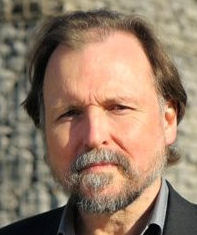
Philip Sutton is co-author of Climate Code Red and the author of the 2015 Breakthrough paper StrikingTargets. He is Manager and Strategist for RSTI (Research and Strategy for Transition Initiation). Philip is one of the leaders of the current campaign for the declaration of a climate emergency and has just written the national Climate Emergency (Restructuring and Mobilisation) model Act. Philip is a past president of the Sustainable Living Foundation and of the Australia New Zealand Society for Ecological Economics. He was the architect of the Victorian Flora and Fauna Guarantee Act passed in Victoria in 1988 and initiated the campaign that led to the banning of nuclear power in Victoria in 1983.
Philip’s talk will be followed by discussion and Q&A. Our meeting is public and all are welcome, so please invite friends and colleagues to hear his important address.
Sustainable Population Australia statement for World Population Day - 11th July 2016
 World population Day was established by the UN in 1989 to highlight concerns as the planet’s population went past 5 billion. It is now at 7.4 billion and rising by about 80 million every year, so the problems are even more intractable (despite the rate of growth declining). Medium scenarios produced by the UN estimate the world population could be between 9 and 10 billion by 2050.
World population Day was established by the UN in 1989 to highlight concerns as the planet’s population went past 5 billion. It is now at 7.4 billion and rising by about 80 million every year, so the problems are even more intractable (despite the rate of growth declining). Medium scenarios produced by the UN estimate the world population could be between 9 and 10 billion by 2050.
It may surprise some that Australia has one of the highest population growth rates in the developed world. We are adding about 325,000 people a year, with about 55 per cent from net overseas migration and 45 per cent from natural increase at the present time, although it has stood at a 60/40 ratio for a number of years.
 Population is a notoriously difficult subject to discuss in public forums, partly due to the complexity of the subject and partly due to the political and emotional nature of the issues. These issues can go to the core of people’s philosophies and values and include notions of freedom and human rights, compassion, religion, progress, ecology, and economic imperatives.
Population is a notoriously difficult subject to discuss in public forums, partly due to the complexity of the subject and partly due to the political and emotional nature of the issues. These issues can go to the core of people’s philosophies and values and include notions of freedom and human rights, compassion, religion, progress, ecology, and economic imperatives.
In Australia, people often get confused between sometimes competing issues like refugees and asylum seekers, racism, border protection, defence, economic migration, colonial guilt, and sustainability. These tensions are not unique to Australia, as we can see from debates in Europe and the US in recent times.
What the European, American and indeed Australian problems show is that sovereign states should not consider themselves immune from population pressures in other parts of the world as desperate people will have little regard for borders or dangerous sea crossings.
To that extent, not-for-profits like Sustainable Population Australia (SPA) are continually lobbying governments to increase foreign aid to the developing world to help it gain control over unwanted and harmful population increase. Unwanted population growth can largely be curtailed through a mixture of education, the provision of modern contraception, safe emergency abortion, and the alleviation of poverty – although some people like to argue about which is more important.
Regardless, the empowerment of women is vital.
So purely from a selfish point of view it is in Australia’s interests to maintain a reasonable level of foreign aid, in concert with the rest of the developed world, and targeted to voluntary family planning programs that we know can be successful. Unfortunately Australia’s foreign-aid budget has been shrinking lately in a retrograde and myopic fashion.
But leaving the more obvious global problem to one side, Australia is long overdue for an open debate on the benefits and burdens of domestic population growth and where these benefits and burdens fall.
A recent survey commissioned by SPA found that most Australians did not think we needed more people; and a survey by SBS in May found that 59% of people thought that the level of immigration over the last 10 years had been too high*.
Proponents of a ‘big Australia’ are mostly business barons and their hirelings: the wealthy gain the most from population growth and can largely insulate themselves from its negative effects like sky-rocketing real-estate prices, long commutes to work and infrastructure shortfalls.
Meanwhile, the average person, but especially the young and the poor, suffers the most – from unaffordable housing, general congestion, and competition for access to education and health services.
More unseen problems tend to harm everybody: these include biodiversity loss, increased greenhouse gases and climate change, the reduction in fresh-water availability, and the steady increase in all kinds of pollution.
While unpopular among elites, especially economists, there needs to be a conversation about the direction our society is going. The privileging and mindless pursuit of GDP growth might not be the best option on a finite planet where limits to growth seem obvious to all those not blinded by dogma. Rather, the pursuit and monitoring of such things as general wellbeing and happiness might be a more rational strategy, especially if that means a more equal sharing of what wealth can be generated in an ecologically sustainable fashion.
If we adopt the latter planned approach, we might well find that a stable rather than an ever-growing population is more sensible. The alternative may well be an unplanned population correction that no one would find enjoyable.

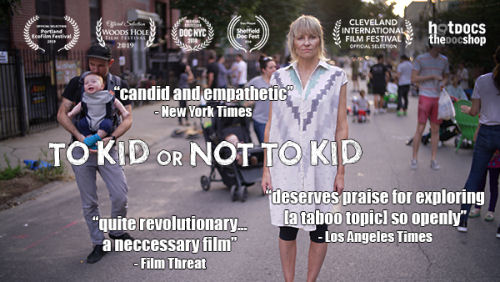


Recent comments